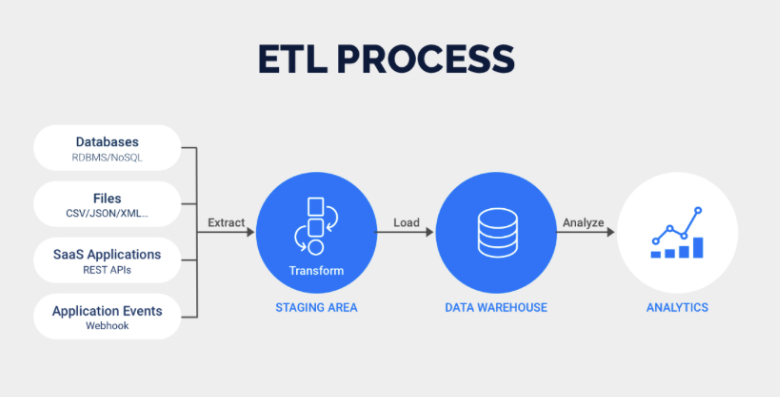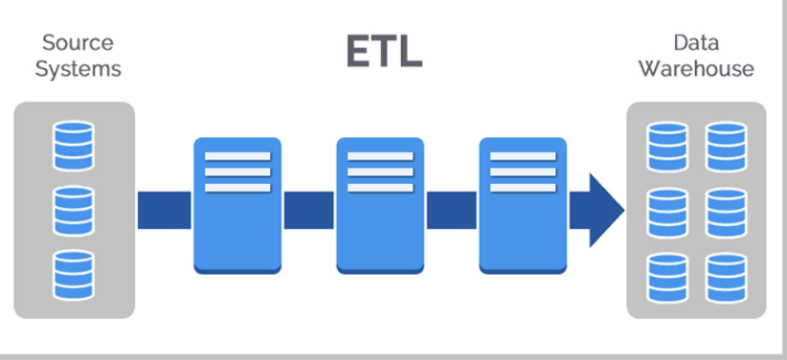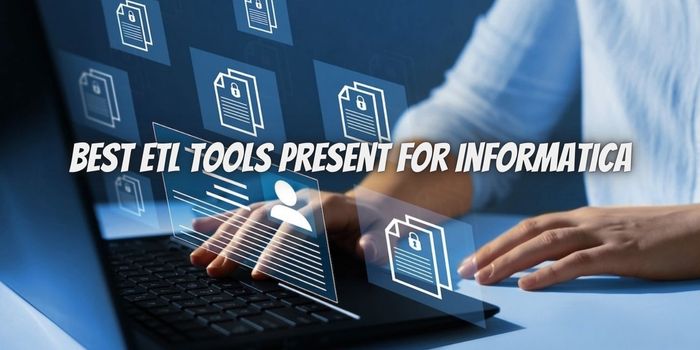There are many ETL (Extract, Transform, Load) tools available on the market today, yet one of the most well-liked options for businesses is Informatica. However, there are a number of other ETL solutions that provide features that are comparable to those that are provided by Informatica.
Introduction:
Informatica offers the most advanced data integration platform available on the market. The data integration system has been tested on approximately half a million different permutations of applications and platforms, ensuring that it is compatible with the widest possible variety of different standards, computer systems, and software programs. This objective and comprehensive perspective distinguishes Informatica in the current industry as a frontrunner in the data integration platform, and it also makes obtaining an Informatica certification one of its most in-demand abilities. I will assist you with the installation of Informatica as well as the setup of its services throughout this blog.
First things first, let’s install Oracle database as the primary database on the PC so we can get started. In the event that you have previously installed & setup the Oracle Database as well as the SQL Developer, you are free to move on to the next step of installing Informatica.

What is ETL?
The aspect of data extraction is central to the practice of data warehousing. In this approach, information is culled from a wide variety of databases.
For Candidate who wants to advance their Informatica Training Course is the best option.
Who developed the ETL?
ETL is a graphical user interface (GUI)-based parallel processing software that was developed by Ab Initio, a multinational software business with headquarters in Lexington, Massachusetts, in the United States. This section provides a synopsis of the other significant historical shifts connected to the ETL journey.
10 Best ETL tools present for Informatica?

The following is a list of the top ten Extract, Transform, and Load (ETL) tools that are currently available for Informatica:
Informatica PowerCenter:
This is the flagship ETL product that Informatica offers, and it’s utilized extensively for data integration, data quality assurance, and data management. It provides a highly effective graphical user interface for the modeling and execution of ETL procedures.
Talend:
This open-source ETL tool was developed with the intention of assisting organizations in integrating, managing, and transforming their data across a variety of different systems. It provides a straightforward graphical user interface that makes it simple for users to develop, carry out, and monitor ETL procedures.
Microsoft SQL Server Integration Services (SSIS):
This well-known ETL tool was developed by Microsoft & gives users the ability to rapidly construct and deploy ETL procedures with minimal effort. It provides a variety of functionalities, such as data profiling, data purification, and data transformation, amongst others.
Apache NiFi:
It is an open-source ETL tool which was developed specifically for the purpose of performing data input & processing in real time. It provides users with a robust graphical interface that makes it possible for them to plan and carry out intricate ETL procedures.
IBM InfoSphere DataStage:
This widely used ETL tool was developed by IBM and includes a wide variety of capabilities for the purpose of integrating and transforming data. It offers a graphical user interface that makes it possible to build and implement ETL operations.
Oracle Data Integrator (ODI):
Oracle has developed this all-inclusive ETL tool with the intention of assisting enterprises in the process of integrating and transforming their data. It provides a robust graphical interface for modeling and carrying out ETL procedures, which is quite useful.
Pentaho Data Integration:
It is an open-source ETL solution that can assist enterprises in the integration, transformation, and management of their data. It provides a user interface that is based on dragging and dropping objects in order to construct ETL operations.
SAP Data Services:
This sophisticated ETL solution from SAP offers a variety of functions for the purpose of integrating and transforming data in a variety of formats. It offers a graphical user interface that makes it possible to build and implement ETL operations.
Syncsort:
This effective ETL tool was developed to assist organizations in integrating and transforming their data in the most efficient manner possible. It provides a wide variety of features, such as data profiling, data quality, & data transformation, among others.
CloverETL:
It is an open-source ETL solution that can assist enterprises in the integration, transformation, and management of their data. It provides a straightforward and intuitive user interface for the creation and operation of ETL procedures.
Where do Informatica-ETL concepts apply in Real-Time Business?
Informatica is a firm that provides a variety of data integration tools, including those for ETL, data masking, data Integrity, data replica, data virtualization, and master data management, among other things. Informatica ETL is by far the most used data integration technology, and it is utilized for connecting to many data sources and retrieving data from those sources.
The following is a list of some of the more common applications for using this software:
- A company that is transitioning from their current software system to a brand-new database management system.
- The process of establishing a Data Warehouse within an organization, whereby the data is transferred from the Production/data collection system to the Warehouse.
- It performs the function of a tool for data cleansing, which involves the detection, correction, or removal of data from erroneous or corrupt records inside a database.
How is the Informatica – ETL tool used?
(1) Extracting:
The information is compiled from a wide variety of resources. Relational databases, XML, flat files, as well as the Information Management System (IMS) are all common types of data sources. Instant data validation checks if the values in a certain domain match what was expected from the sources.
(2) Modify:
The extracted data then undergoes a series of rules or logical operations, such as cleaning, in order to get it ready for loading into the target data source. When data is cleaned, only “correct” data is sent to the receiving system. Data can undergo a wide variety of transformations to meet any organizational requirement. Columnar and row-based, coded and computed values, key-based, combining disparate data sources, etc. are only a few examples.
(3) Loading:
The data is simply transferred to the destination database.
There is no waiting around for one step to finish before moving on to the next.
Some other aspects of ETL Tool?
Parallel Processing
Parallel Processing is used in ETL implementation. The term “Parallel Processing” refers to a computation that runs across numerous processes in parallel. Three types of parallelism are possible in ETL:
- Data by dividing a large file into several smaller ones.
- The pipeline facilitates the simultaneous execution of multiple components on a single data set.
- Execuables are an example of a component. Involved procedures performed in parallel on dissimilar data.
Data Re-Run, Data Reuse, and Data Recovery
Data is tracked using unique identifiers assigned to each data row & each step of the procedure (called a “run id”). Some milestones are established to mark the end of individual processes. These benchmarks specify that we must rerun the query in order to accomplish the task.
Visual ETL
PowerCenter, Metadata Messenger, and other modern ETL solutions enable the rapid, automated, and highly effective structuring of data for specific business purposes.
You can use a drag-and-drop interface to deploy pre-built database & metadata modules in a solution that takes care of the necessary configuration, connection, extraction, transfer, & loading steps for you.
The characteristics of a Good ETL Tool
- Data connection and scalability should both improve as a result.
- It should be able to link together different types of relational databases.
- Users should be able to import csv-datafiles with minimal or no coding requirements, hence this feature should be included.
- The visual mapper and the data must be easily integrated through a straightforward user interface.
- The data modules should be adaptable to the specific requirements of each company.
The Future of ETL
Products and services from Informatica-ETL are offered to facilitate streamlined company operations, decreased big data management, increased data security, data recovery from disasters, and automated visual data development and design. One can classify them generally as-
- ETL with Cloud
- ETL with Big Data
- ETL with SAS
- ETL with Metadata etc.
- ETL with HADOOP
- Mobile optimized solutions
- ETL as Self-service Access etc., there are many more.
According to the modern enterprise Business world, ETL is flourishing across the board in terms of value, staffing, integration, trust, innovation, & deployment.
Advantages of Informatica ETL
- precise and automated rollouts
- Reducing the potential downsides of using cutting-edge technology
- Information is encrypted and easily traceable
- Personal, modifiable permissions access
- Private data backups, security checks, and upkeep are a must.
- Eye-catching, creative representation of information.
- Hosted on the cloud and a centralized location.
- Definable firmware security for network protocol data and administration.
Side effects of Informatica ETL kind of automated data integration systems
Anything within reason is acceptable. Nonetheless, a thing like a data integration tool makes the company dependent on it in a persistent manner. Because it is a machine, the only way it will function is if a predetermined input is provided to it. Regardless of how well the data recovery mechanisms are constructed, there is always a possibility that the systems will fail completely. The rat only needs a tiny hole in order to construct its home safely within our home. In a similar vein, any kind of improper usage of even the most basic data results in a significant loss for the business. Both carelessness and negligence are detrimental to the functioning of these types of systems.
Conclusion
A wide variety of ETL solutions are available for use with Informatica, and these tools can assist businesses in properly integrating, transforming, and managing their data. The list that was just presented contains many of the most effective ETL tools that are currently in use by businesses in a wide variety of sectors. While every tool has its own set of features and benefits that are unique to it, organizations should take the time to carefully examine their requirements and select the ETL solution that is the most appropriate for meeting those objectives. Finding the correct ETL solution can assist businesses in streamlining their data integration and management processes, improving the quality of their data, and increasing their ability to make decisions.




